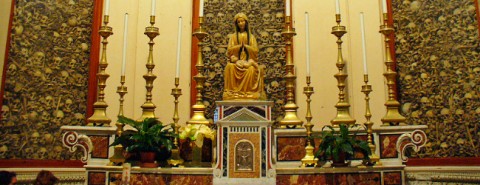Heritage or hate?

Popes often acknowledge saints and martyrs, but rarely are the heroes of the faith present as they were at a 2013 ceremony in Otranto, Italy, one of the more controversial and unsettling canonizations of modern times. Not only were relics of the martyrs present, but the skulls of several hundred of them were on plain view, kept behind glass at the rear of the altar. That feature was startling enough. The story associated with the canonization raises its own set of troubling questions.
In the 15th century, the Ottoman Empire expanded mightily across southern and eastern Europe. Constantinople fell in 1453, and most of the Balkans were soon in Turkish hands. The main question facing Christian Europe was how far the crescent flags of Islam might spread and when (rather than if) Italy would be attacked. That nightmare came true in 1480, when Ottoman forces invaded the port of Otranto.
The occupation of Otranto was short-lived but brutal. Twelve thousand died in the campaign, and in a single horrific incident, the invaders killed some 800 local residents, including their bishop. The exact circumstances of the slaughter are unclear, but early accounts reported that the citizens were executed after refusing to renounce their Christian faith. Such exemplary loyalty to the faith inspired popular devotion to the victims as saints and martyrs, and these faithful were officially canonized in the 2013 ceremony.




